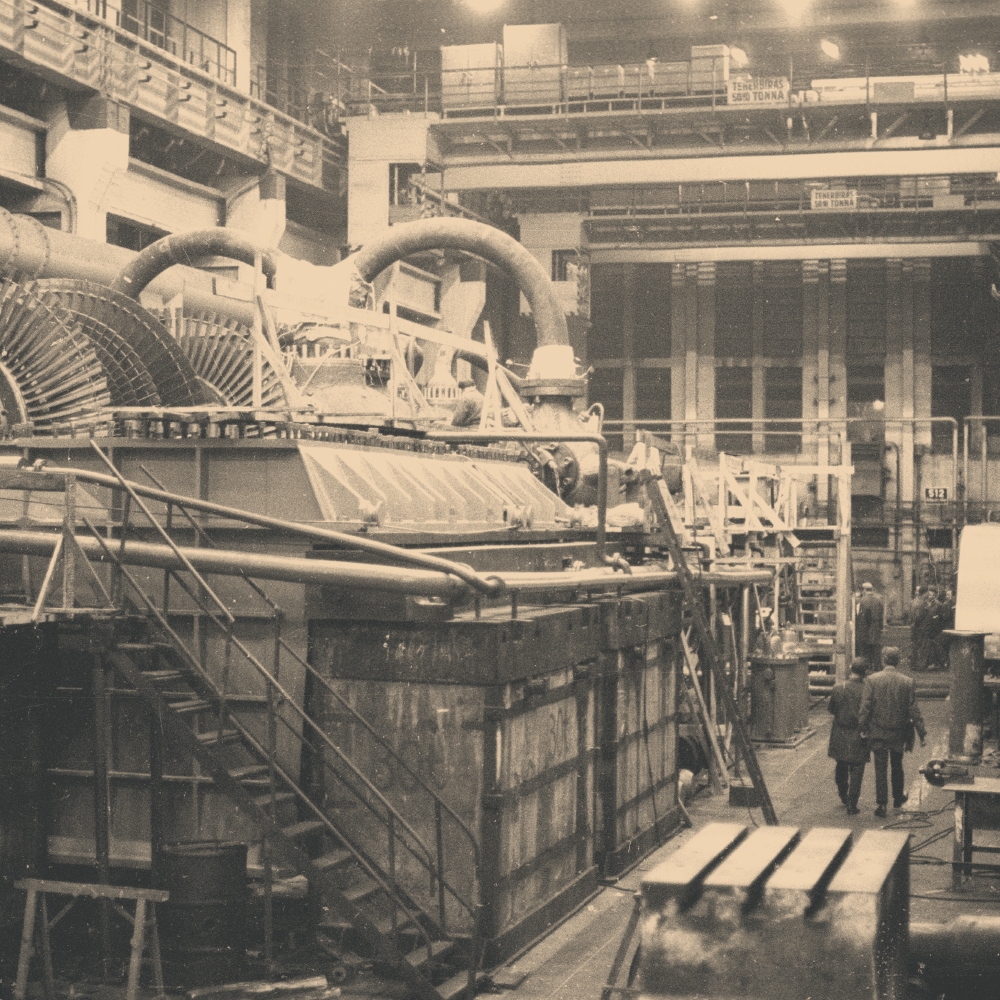
In 1893, General Electrical JSC Budapest began installing the core devices to provide electricity. The boilers were made in József Eisele’s foundry. Because of the quick rise in electricity consumption, the central site had to be expanded after only one year. By the end of 1895, its power output was 3300HP. They also sought perfection, so this is where the first chain-grated boiler of the country was installed, which significantly decreased the formation of soot and smoke. In 1906 the first steam turbine was installed on the site, which replaced the older piston steam machines. The turbines were delivered from László Láng’s machine factory.
The power plant on Berenczei Street produced 1800V and 2000V of two-phase voltage; 5000V of three-phase voltage; and 26-period electricity. The transformation to direct current happened on a so-called “sub-side”, of which there were five (Kazinczy Street, Murányi Street, Horn Ede Street, Lily Street and Logodi Street). Transmission lines forwarded the electricity to the transformation site, and cables carried it further to the consumers and the distributing systems. Cables were laid 80-100cm below ground level. On one side of the street the cables were laid by General Electrical, while on the opposite side Hungarian Electrical cables ran under the ground.











